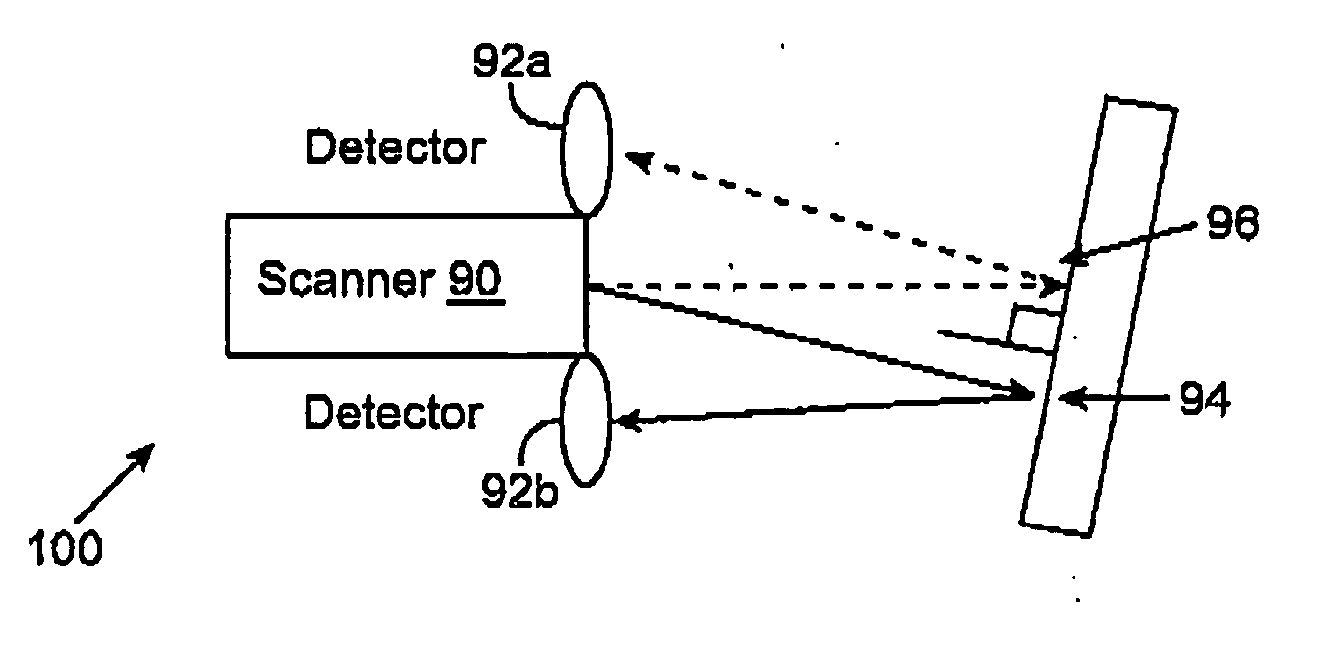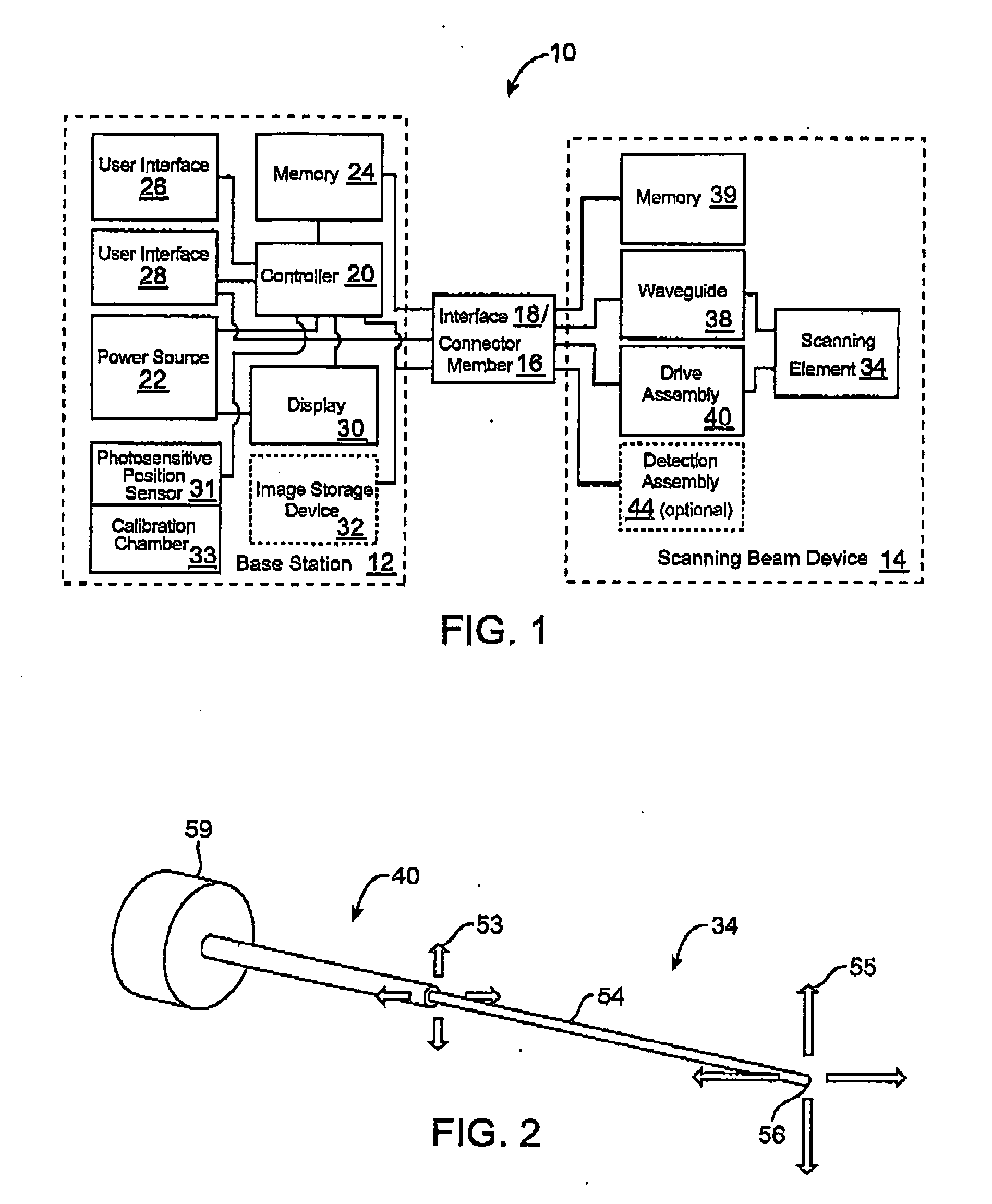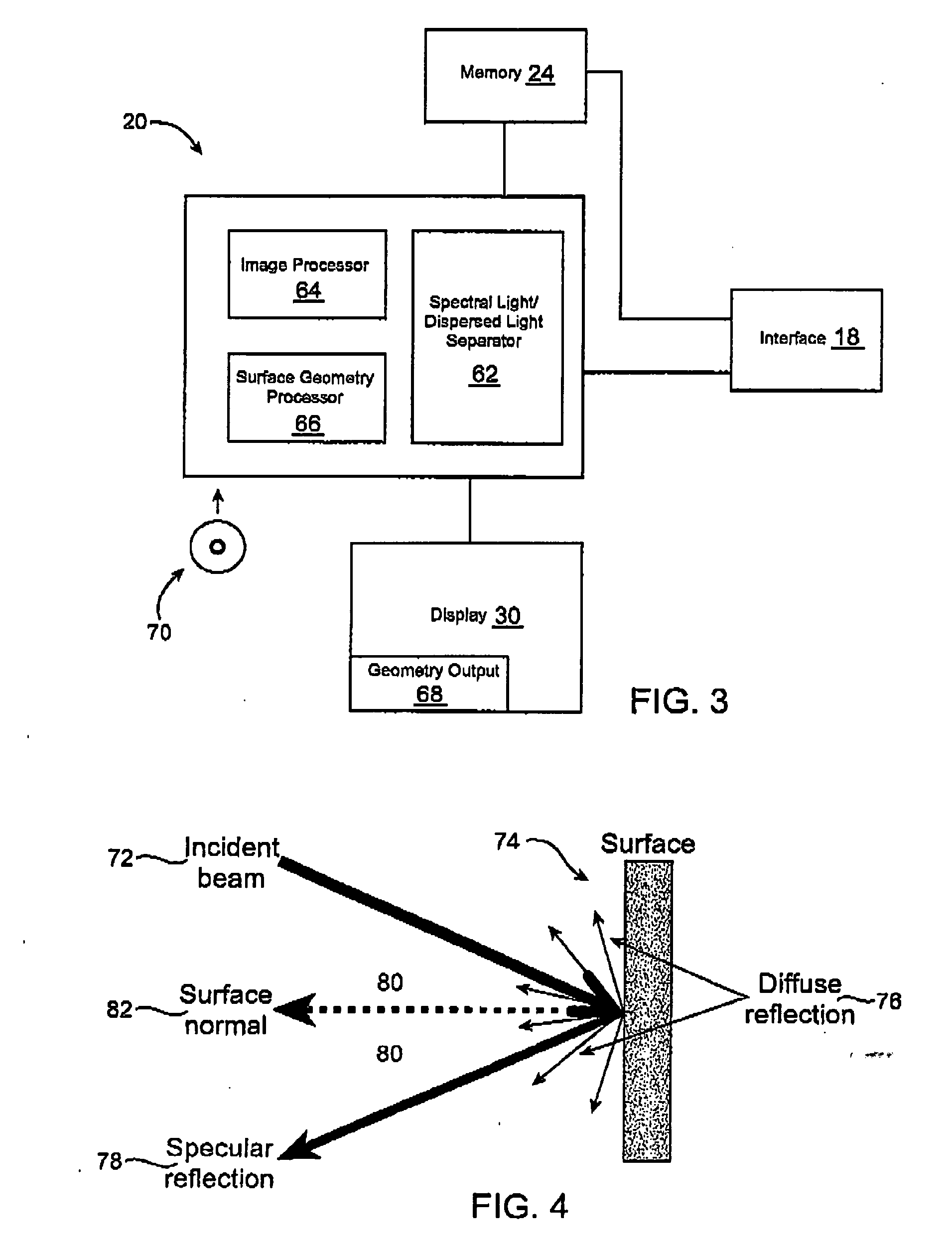[0007] The present invention provides methods, systems, and devices for determining spatial relationships between a probe and a target surface. Embodiments of the invention will take
advantage of specular reflections from the target surface. Unlike the diffuse
backscatter reflections upon which much of the image in a scanned beam device is typically based, these specular reflections typically vary dramatically with small changes in angle between the
scanning beam and the target surface. As the geometry of the beam
scanner and
light detector of the probe are known, and as the angle of the
light beam projected from the scanner is often used for accurately generating an image, the pattern of spectral light reflected from the target surface back to the
detector(s) may allow the distance between the probe and the target surface, and / or the angular relationship between the probe and the target surface, to be calculated. Conveniently, the specular reflections are typically readily identified and separated from the diffuse reflected light from which an image is primarily formed, as the specular reflections will often be significantly brighter than the diffuse reflected light. Hence, the spatial relationships can be determined without adding significant mechanical complexity or bulk to scanning beam imaging devices such as the new scanning
fiber endoscopes.
[0009] The probe will often comprise an
endoscope, the surface often comprising a
tissue surface within a patient body. The beam may be oscillated by vibrating an
optical fiber with a two-dimensional scan (such as a spiral or the like), and the probe will often transmit image signals for imaging of the
tissue surface in response to
diffuse reflection of the light beam from the
tissue surface. Both the diffuse light and specular light may be detected by the
detector of the probe. Specular image signals may be separated from display image signals using a difference in brightness between these two different forms of reflected light. The
spatial relationship may be determined using these separated specular image signals, such as by analyzing a
centroid of a
specular reflection, a pattern of specular reflections received by a plurality of detectors, a shape of a
specular reflection, or the like. As the specular reflection may be located in a relatively small portion of the overall imaging
field of view, an
angular scan magnitude may be reduced when measuring the specular reflection so as to enhance measurement resolution.
[0010] Typically, the distance or angle will be determined at least in part from an angle of the oscillating beam when the specular reflection is sensed. The beam will be oscillated with a scanner, and the distance between the probe and the surface may be determined, for example, using a scanner / detector distance between, for example, a center of the scanner and the detector. In some embodiments, the specular reflection may be sensed with a plurality of light detectors of the probe, so that a pattern of spectral reflections from the surface are determined. The distance may be determined in response to a spectral reflection
pattern size, and / or in response to a single spectral reflection from an associated single detector, so that a plurality of distances may optionally be measured when using multiple detectors. Where the detectors are at different distances from the center of the scan, additional information regarding the angle and / or geometry of the target surface can be identified. Similarly, when the angle of the surface is determined relative to the probe, the angle may be determined at least in part from a shape of an individual specular reflection received at a single detector, a shape of a pattern of spectral reflections received by a plurality of detectors, a size of an individual spectral reflection or pattern of spectral reflections, or the like. By measuring the angle of the surface relative to the probe at a plurality of locations within a
field of view of the probe (for example, by using a probe having a plurality of detectors, or by moving at least a portion of the probe between two different measurements), a map of the target
surface geometry may be generated. In some embodiments, the entire probe may move, with the
system identifying one or more datum locations in the images before and after the movement so as to accurately combine the two separate measurements.
[0011] While generally described as being based on an image, it should be understood that a plurality of spectral reflection images may be combined (such as by averaging the images) so as to enhance image accuracy. Individual diffuse and / or spectral images may be generated at a rate of at least 1 frame per second, often being 15-30 frames per second.
 Login to View More
Login to View More  Login to View More
Login to View More 


